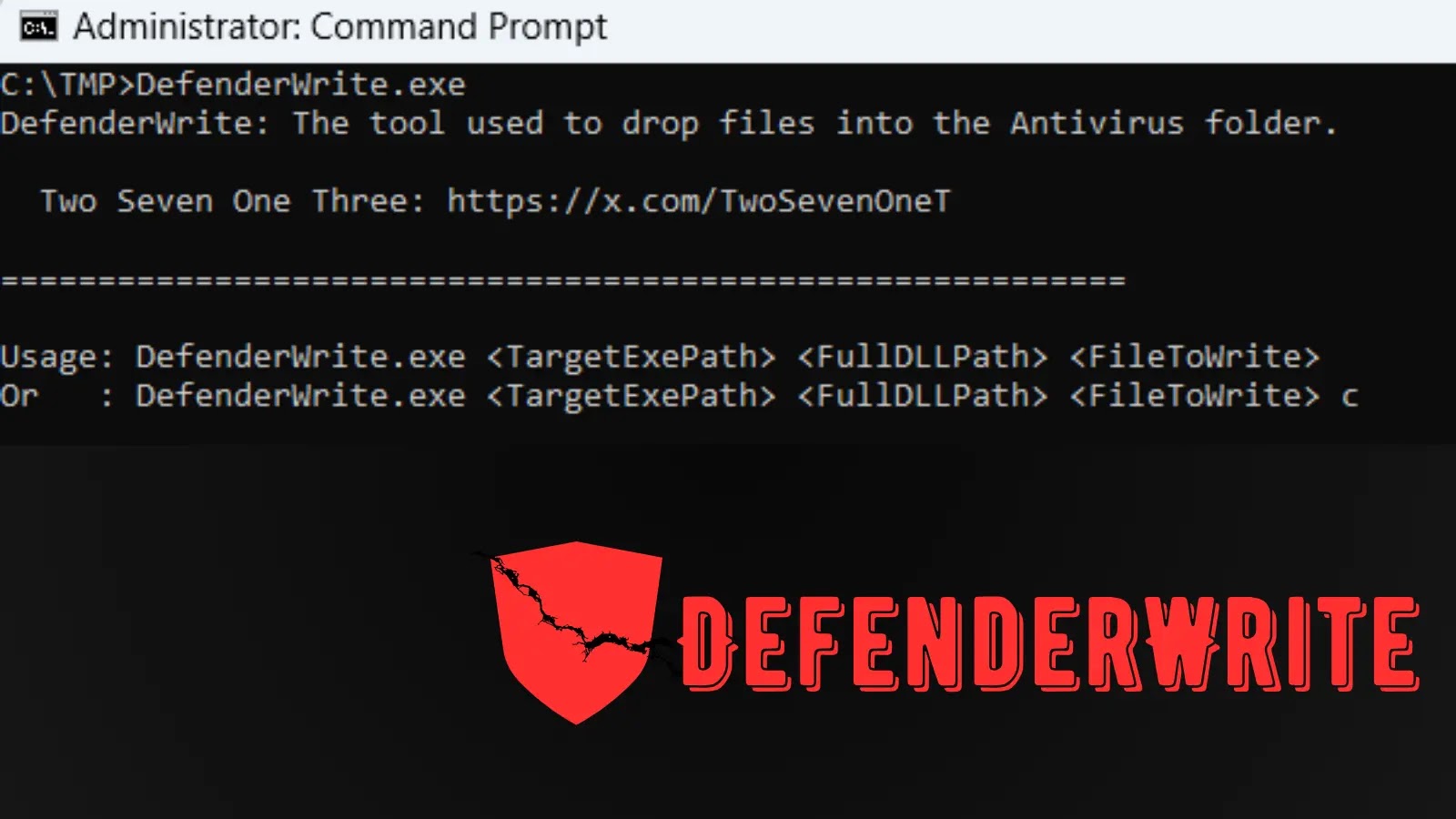
New DefenderWrite Tool Let Attackers Inject Malicious DLLs into AV Executable Folders
The landscape of cybersecurity is constantly redefined by novel attack vectors. A new tool, dubbed DefenderWrite, has emerged, demonstrating a concerning capability: allowing attackers to inject malicious Dynamic Link Libraries (DLLs) directly into the executable folders of antivirus (AV) software. This development highlights a sophisticated bypass technique that leverages whitelisted Windows programs, posing a significant threat to endpoint security.
Understanding the DefenderWrite Technique
Developed by cybersecurity expert Two Seven One Three, DefenderWrite exploits a critical flaw in how some operating systems and AV solutions handle trusted processes. At its core, the tool identifies and leverages legitimate, whitelisted Windows programs that possess elevated privileges. These programs, often integral to system operations, are typically exempt from stringent security checks.
The DefenderWrite technique allows attackers to compel these trusted programs to write arbitrary files into highly protected locations, specifically the executable folders of antivirus software. This bypasses traditional security mechanisms that would otherwise prevent unauthorized modifications to these directories. By doing so, the tool creates an opportunity for threat actors to introduce malicious DLLs, which can then be loaded by the AV solution itself, effectively turning the defender into an accomplice.
Implications for Endpoint Security
The ability to plant malicious DLLs within AV executable folders carries severe implications for endpoint security and malware persistence:
- AV Bypasses: Malicious DLLs loaded by the AV engine itself can potentially disable or manipulate the AV’s detection capabilities, allowing other malware to operate undetected.
- Persistence: By embedding malware components within trusted AV directories, threat actors can achieve high levels of persistence. The malicious payload would be reloaded every time the AV software starts.
- Evasion: Threat actors can use this method to evade detection by hiding their malicious code within a trusted process, making it difficult for security teams to identify the true source of compromise.
- Privilege Escalation: Depending on the privileges of the compromised AV process, attackers could potentially escalate their own privileges within the system.
While DefenderWrite itself is a tool designed for penetration testers and red teams to assess system vulnerabilities, its underlying technique underscores a vulnerability that could be weaponized by malicious actors. This method represents a sophisticated approach to bypassing existing defenses, forcing a re-evaluation of how trusted processes and AV integrity are managed.
Remediation Actions and Mitigations
Addressing the vulnerabilities exposed by DefenderWrite requires a multi-faceted approach, focusing on hardening endpoint security and enhancing detection capabilities:
- Application Whitelisting Enhancement: Implement stricter application whitelisting policies that go beyond just executables to include DLLs. Ensure that only digitally signed and verified DLLs are allowed to execute from critical system and AV directories.
- Behavioral Monitoring: Enhance Endpoint Detection and Response (EDR) solutions with advanced behavioral analytics to detect unusual write operations or file modifications within sensitive directories, even if initiated by whitelisted processes.
- Integrity Monitoring: Implement robust file integrity monitoring (FIM) solutions that continuously monitor critical system and AV folders for unauthorized changes.
- Principle of Least Privilege: Ensure that all system processes, including those used by AV solutions, operate with the absolute minimum necessary privileges.
- Regular Security Audits: Conduct frequent security audits and penetration testing, specifically targeting techniques like DefenderWrite, to identify and patch potential weaknesses.
- Patch Management: Keep operating systems, AV software, and all other applications fully updated to patch known vulnerabilities that adversaries might exploit to gain the initial foothold necessary for such attacks.
Relevant Tools for Detection and Mitigation
Several tools and categories of solutions can assist in detecting and mitigating the threats posed by techniques like DefenderWrite:
| Tool Name / Category | Purpose | Link |
|---|---|---|
| Endpoint Detection & Response (EDR) | Detects and responds to advanced threats by monitoring endpoint activities, including unusual file writes and process behavior. | N/A (Vendor-specific, e.g., CrowdStrike Falcon, SentinelOne Singularity) |
| File Integrity Monitoring (FIM) | Monitors critical system files and directories for unauthorized changes, alerting security teams to suspicious modifications. | N/A (Many commercial and open-source options) |
| Application Whitelisting/Control Software | Restricts execution of unauthorized applications and libraries, providing granular control over what can run on a system. | N/A (Vendor-specific, e.g., Microsoft AppLocker, Ivanti Application Control) |
| Sysinternals Process Monitor | A powerful utility for real-time monitoring of file system, Registry, and process/thread activity on Windows systems, useful for forensic analysis. | https://learn.microsoft.com/en-us/sysinternals/downloads/procmon |
Conclusion
The DefenderWrite tool serves as a stark reminder of the continuous innovation in attack methodologies. Its ability to leverage whitelisted Windows programs to tamper with AV executable folders represents a sophisticated bypass technique that demands heightened attention from cybersecurity professionals. By understanding the underlying mechanism and implementing robust remediation strategies, organizations can bolster their defenses against such advanced threats, ensuring the integrity and effectiveness of their endpoint security solutions. Proactive monitoring, coupled with stringent control over application execution and system processes, remains paramount in safeguarding against evolving cyber risks.





